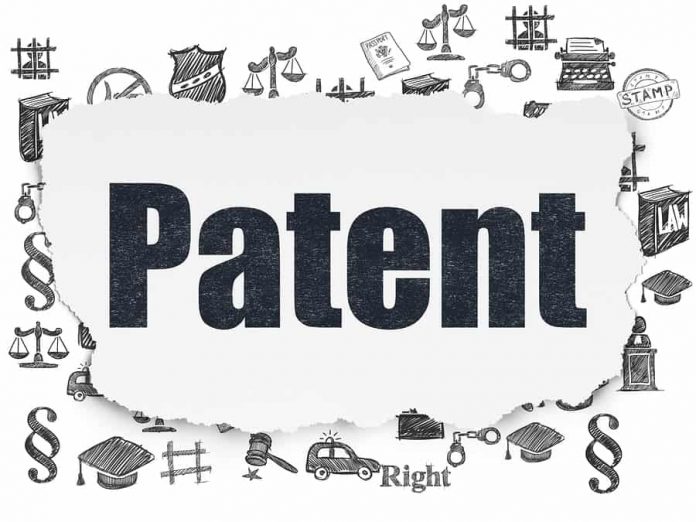This article is written by Anushree Modi, pursuing Certificate Course in Introduction to Legal Drafting: Contracts, Petitions, Opinions & Articles from LawSikho.
Table of Contents
Introduction
Firstly, understanding what patent royalty agreement is important before beginning to draft it. It is a type of contract that delineates the terms and conditions under which a licensee can use a licensor’s patented product. It is put in place when a licensor licenses the rights to their invention (in full or in part). Subject to certain terms this kind of agreement grants rights to manufacture, sell and/or use a patented innovation, to licensee.
The word ‘Patent’ in a patent royalty agreement is the exclusive right granted for an invention, which can either be a product or process and offers a new way of doing work or provides a new technical solution to an existing problem. The word ‘Royalty’ in the patent royalty agreement means the remuneration or money given to the licensor fixed in this agreement in exchange for patent rights to the licensee.
Parties involved in the patent royalty agreement
- Licensor/s- Individual or a group of people (can be a company as well) who have the patent ownership rights over the invention.
- Licensee/s- Individual or group of people (can be company/ companies as well) to whom the licensor will give the right to use the patent for providing goods or services in exchange for compensation (i.e., royalty).
Advantages of properly drafting patent royalty agreement
There are various advantages of patent royalty agreement such as:
- transferring the risk involved in manufacturing and designing the products to the Licensee/s; outreaching towards global markets;
- exclusive rights of patent remaining intact due to limited period agreement and competent advantage of using the clientele of large cooperation by assigning them rights.
As the saying goes “with greater perks comes greater responsibilities” and such can be ensured by incorporating the fundamental principles of drafting a patent royalty agreement. Therefore, let’s look into various aspects which need to be taken care of while drafting the patent royalty agreement.
Important points to keep in mind while drafting a patent royalty agreement
While drafting a contract or agreement one must ensure to import all the necessary clauses and revise the agreement as much as possible to avoid lengthy legal consequences in the future in case of any breach or dispute between the parties.
For ensuring this one must first confirm that all prerequisites if any, procedures, and documents have been completed and ready before drafting the agreement. Example patent specification, checking the competency of both licensor and licensee, etc.
Secondly, after ensuring that all the legal procedures and documents required before agreeing to come into a patent royalty agreement, one must ensure exhaustively that all the general and specific clauses (if any) are laid in the agreement. Which would ensure no confusion in the future and quick dispute resolution between the parties. Due diligence must be performed by both parties in this agreement.
A patent royalty agreement must include the following information
- In the name clause, detailed identification of licensor and licensee should be mentioned.
- Activities in which licensee and licensor are involved including the project/purpose of entering into this agreement.
- What exactly is being licensed (Example: a license to make, use and apply company A’s patented design for creating new device intricacies).
- The geographical scope of the license.
- Date when the agreement is signed and duration of the patent agreement.
- Details of the license’s exclusivity.
- Restrictions and conditions on the licensee’s use of patent (Example: Company B has no right to sub-license the patented technology).
- The extent and duration of the patents.
- Royalties must be paid by licensee in exchange for the use, manufacture or/and sale of the patent (including the royalty rate, royalty base, other payments and payment schedule).
Thirdly, it is necessary for drafters to have a good technical understanding of the intellectual property itself, as well as the business arrangement planned by the parties with respect to the intellectual property rights for a more detailed draft to come out.
Defining royalties in agreement
The most important clause in the patent royalty agreement is the compensation clause or we can say in this agreement : royalty clause. Both the parties mutually agree for the royalty to be given to the licensor by the licensee for using the patented product. The patent royalty agreement must mention the following:
- The patent royalty rate: It is basically agreed upon based on the percentage of sales.
- The royalty base: Usually consists of gross/net revenue or sales.
- Minimum patent royalty payments: For safeguarding the rights of the licensor and his patent an amount is fixed which the licensor needs to pay each year or monthly, regardless of generated sales, profits etc.
- Royalty payment schedule: The schedule according to which the royalty needs to be paid viz. monthly, quarterly, annually, or as per another schedule fixed mutually between the parties.
- Other payment: When licensee pays an upfront fee on top of the regular royalties or share from any other benefit extricated by the licensee by using, manufacturing or selling the patented product.
Common mistakes that are to be avoided while drafting a patent royalty agreement
There are certain common mistakes that should be avoided from both sides while considering drafting a patent royalty agreement.
- Before consenting to the patent royalty arrangement, the licensor often awards the option to utilise a patented item to the licensee which results in patent encroachment. In this way, Licensee ought to be sure of consenting to the arrangement before utilising, assembling, or selling the item comprehensive of development.
- Also, the licensee should ensure that the licensor is the sole proprietor of patented items and check every legal record associated with the patent before entering into an arrangement.
- While securing numerous licenses frequently, the licensor mostly while finding financial backer/licensee winds up conceding permits to some non-skilled person, organisation, or company. This leads to their patented products landing into wrong-hands and being misused. This could lead to failure of the purpose of the licensor in bringing out the creativity in the market.
- The licensee can suffer losses as a result of the owner’s lack of understanding of his/her obligations. Even during the licencing period, the licensor remains the owner of the patented product or design. As a result, he may be held accountable for his innovation even while under licence.
Sample of the patent royalty agreement
THIS AGREEMENT is made on <date along with day> day of <month> of <year> in <<place>>.
BETWEEN
<Name of licensor company or individual> a company registered in <country of registration> under <act/law under which registered> bearing number <company registration number> whose register office is at <office address> (hereinafter referred to as “Licensor”)
AND
<Name of licensee company or individual> a company registered in <country of registration> under <act/law under which registered> bearing number <company registration number> whose registered office is at <office address> (hereinafter referred to as “Licensee”)
Licensor and the Licensee together referred to as the “Parties” or individually as “Party”.
WHEREAS:
- The licensor has developed and is the beneficial owner of the substantial body of valuable Technical Information as defined below relating to the manufacture, assembly, and commercial operation of the Product(s) and is the beneficial owner of Patent Rights relating thereto as defined below. The licensor is the sole and exclusive owner of and has the sole and exclusive right to grant licences under Letters Patent of <country> issued to it specifically<number> entitled <patent name> and <number >, entitled.
- No agreement in conflict with this agreement has been entered by the licensor and the licensor has not granted any other person, firm, or corporation any right, license, shop-right, or privilege granted under this agreement.
- The licensee wishes to receive, and the licensor is willing to grant a license on the terms and conditions set out in this agreement to use such information and to work under the set Patent Rights in order to manufacture, use, sell or otherwise deal in the product(s).
1. Definitions and Interpretation
In this agreement unless the context otherwise requires to falling expressions have the following meanings:
2. Grant of License
The licensor awards to the licensee the select rights and permit to produce, sell, and use the contraption encapsulating, utilizing, and containing the creations protected in the previously mentioned Letters Patent all through the <country> and its regions, to the full finish of the terms all terms for which such Letters Patent have been or might be without a doubt, and any reissue or reissues of such Letters Patent, except if this arrangement is ended before such term or terms, as given beneath.
3. Schedule of Royalties
The Licensee consents to pay the Licensor, initiating <date>, and after that date, during the duration of this arrangement, eminences on device exemplifying and containing the previously mentioned developments, which are fabricated, sold, and gave by the Licensee; and such sovereignties will be figured in the accompanying way and according to the timetable set out as follows:
4. Rate of Royalties
- The licensee will have the right, choice, and privilege of choosing the pace of eminence to be paid by the timetable contained in the Article 3 of this understanding and for that reason licensee may, for three quarterly times of any monetary year pay sovereignties on the base premise, in the last quarter report upon the premise of the real number of contraption sold during the year, and the sovereignty for the whole will be figured based on such diminished eminence, and the change and instalment made likewise.
- It is concurred, notwithstanding, that the base ensured yearly sovereignty of the licensor under this understanding, starting <date> will be <amount> and that licensor will in no one year (or some other timetable picked by parties) after <date>, during the duration of this arrangement, gets not exactly that entirety; and Licensee will not be chargeable with any total in the abundance of <amount>, except if the assertions delivered by show sovereignties because of the licensor to be in overabundance of <amount> in which the occasion the licensee will pay the real eminences due in the way indicated.
5. Statement of Sales/ Account
The Licensee within 15 days after the main day of <January, April, July, and October or first month of quarters> in every Year during the constant of this arrangement, consent to outfit to the licensor composed articulations having sworn to tell the truth, indicating the all outnumber of contraption typifying and containing the previously mentioned innovations sold by the licensee during the former quarter, such explanation to be joined with a money order in an instalment of the sovereignty for the time frame covered. The primary assertion will be delivered not later than 15 days of the <month, year> and will cover the date from the day of this consent to <date>.
6. Infringement
The licensee will have the sole option to establish and indict all suits to charge all infringers of the previously mentioned Letters Patent; and now and again during the continuation of this understanding, and its own cost, may organize any suit or suits which are made in vitality. The licensee will have the sole option to establish and arrange such suits and to utilize its own advice for such suits, and licensee will pay for all administrations delivered by counsel so held, for every accidental expense and costs.
7. Joinder and Licensor
The licensor concurred that the licensee may join as gathering offended party the licensee should think that it’s important or attractive in any suit or suits which the licensee me foundation including the previously mentioned letters patent, it is concurred that in such even the licensor will not be chargeable for any expense or costs by reasons of being joined as gathering offended party, however that licensee will bear every such cost.
8. Cooperation of Licensor
The licensor consented to execute any papers, archives, or different instruments which might be discovered to be important or alluring to impact the restrictive right and permit conceded to the licensee; and furthermore to execute any papers which might be discovered fundamental or attractive in any suit or suits brought under the compliant with this understanding; and the licensor further concurs that it will affirm in any impedance or lawsuit, at whatever point mentioned to do as such by the licensee, all and cost of the Licensee.
9. Invalidity of the agreement
If in any suit involving a Patent, pursuant to which the exclusive right and license has been granted, infringement of such right and license, the Patent agreement should be declared to be invalid by the court, or be construed by the court as not to cover a defendant’s apparatus, pertaining especially to <specify>, then the royalty agreed to be paid under this agreement shall be afterward be waived, and the licensee shall be immediately released off and from any and all obligation under this agreement.
10. Injunctive Relief
The Licensee acknowledges that if he sub-licenses a third party with Right to patent, without the consent of the Licensor or breaches any of its obligations under this Agreement and that monetary damages shall be inadequate to compensate and causing irreparable damage to the Licensor. Consequently, the Licensee acknowledges that, in addition to any other remedies of rights, the Licensor shall have the right to obtain injunctive relief to enforce the terms of this Agreement.
11. Governing Laws and Jurisdiction
a. Any dispute, controversy, or contradiction between the parties relating to this Agreement or in case of breach of Agreement by either of parties firstly would be amicably resolved through dispute resolution. The resolution proceeding shall be governed by the Arbitration and Conciliation Act, 1996, and shall be in the English language. The arbitrator/arbitral panel shall also decide on the costs of the arbitration proceedings.
b. If the dispute is not resolved amicably between the parties that both parties reserve the right to file a suit. The jurisdiction of the court of <place> would prevail.
12. Termination
a. It is agreed that this agreement shall continue during the life of the above mentioned licensor, but that the licensee shall have the night at any time, upon <2> years (or any duration mutually fixed by both parties, by notice in writing, delivered to licensor by licensee, at its last known address (and for that purpose mailing of notice by registered mail shall be deemed sufficient), to terminate this agreement and at expiration of the <2> years from that date of the such delivery of such notice, this agreement shall cease and terminate for reasons stated in Article 9 above, or if the patents have become of no value to licensee in view of other patents or other improvements in the <specify> industry, and become null and void.
b. Any and all rights which licensee shall have for possession under this agreement shall be by its relinquishment and surrender to the licensor; except that the licensee shall have the right to sell all apparatus already manufactured, embodying the inventions upon which royalties will be paid as provided for above.
13. Indemnification
The Licensee hereby provides complete indemnity to the Licensor for any loss or damage caused to the Licensor or any of its affiliates and assignees due to breach of obligations of the Licensee under this agreement.
14. Binding Effect
a. This agreement shall bind and apply to the successors and assignees of the licensor, and may incur to the benefit of, may be transferable to, and be binding upon the successors and assignees of the licensee.
b. This Amendment may be executed in two counterparts, each of which will be deemed an original, but all of which together will constitute one and the same instrument.
IN WITNESS WHEREOF, the parties have executed this agreement at <place of execution> as the day and year first before written,
LICENSOR
______________________________________
Authorized Signature
______________________________________
Print Name and Title
In the presence of
<Name and Address of Witness>
LICENSEE
______________________________________
Authorized Signature
______________________________________
Print Name and Title
In the presence of
<Name and Address of Witness>
Conclusion
The clauses set forth in the patent royalty agreement must be constitutional and statutorily legal. It is to be noted that every contract is different not just because of different party names but also due to different products, procedures, inventions, processes, restrictions, duration, nature of contract or royalty rates, etc. Therefore, the contract should be drafted very precisely and carefully as they lay down the foundation for future relations between the contracting parties.
In this article, we looked upon different aspects and factors to keep in mind while drafting the patent royalty agreement. The clauses and the inclusion in them that are deemed necessary and also vary from product to product.
References
- Patent License Agreement- Priori, https://www.priorilegal.com/legal-forms-and-documents/patent-license-agreement (last visited Mar. 28, 2021).
- Patent- World Intellectual Property Organization, https://www.wipo.int/patents/en/ (last visited Mar. 31, 2021).
- What is a Patent Royalty Agreement- Royalty Range, https://www.royaltyrange.com/home/blog/what-is-a-patent-royalty-agreement (last visited Mar. 31, 2021).
- Patent Licensing- IIPRD Blog- Intellectual Property Discussions, https://iiprd.wordpress.com/2019/05/09/patent-licensing/?utm_source=Mondaq&utm_medium=syndication&utm_campaign=LinkedIn-integration (last visited Mar 30, 2021).
- Patent Royalty Agreement, https://simply-docs.co.uk/Royalty-Agreements/Patent-Royalty-Agreement (last visited Mar 29, 2021).
- To know more about Patent Royalty Agreement click here.
Students of LawSikho courses regularly produce writing assignments and work on practical exercises as a part of their coursework and develop themselves in real-life practical skills.
LawSikho has created a telegram group for exchanging legal knowledge, referrals, and various opportunities. You can click on this link and join:
 Serato DJ Crack 2025Serato DJ PRO Crack
Serato DJ Crack 2025Serato DJ PRO Crack











 Allow notifications
Allow notifications



